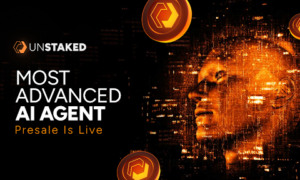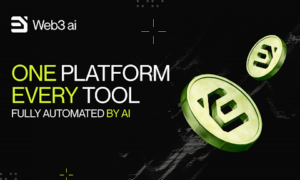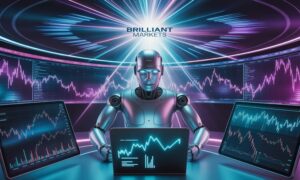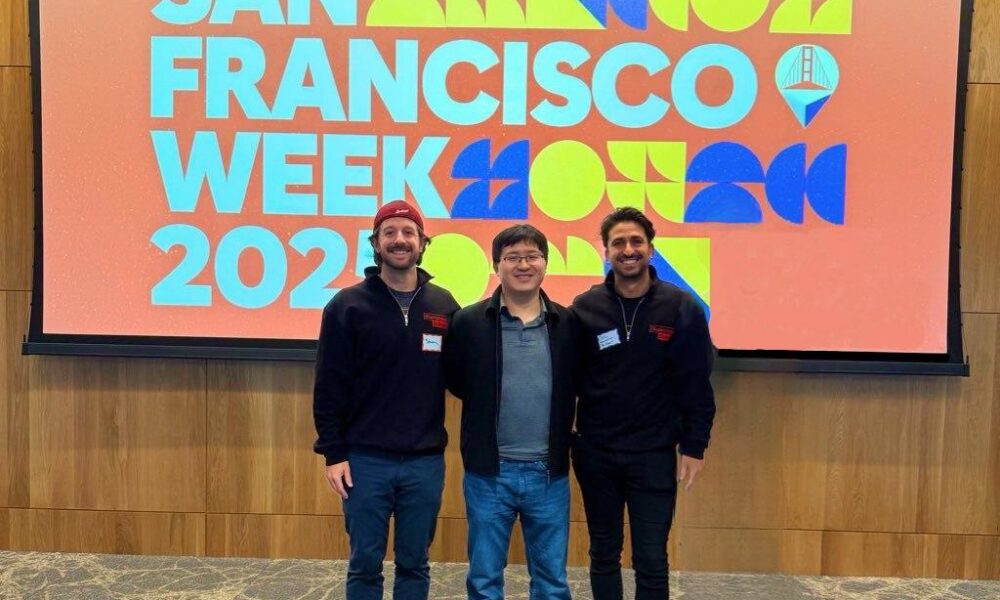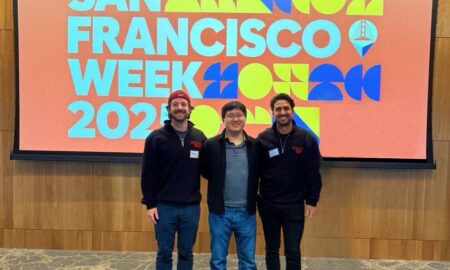Creating a website used to mean hiring a designer, waiting weeks for mockups, and going through endless revisions. Now, AI tools can analyze a brand’s identity, preferred style, and target audience to produce an instant, custom layout. It’s not about generic templates anymore—AI understands context. Whether a business wants a sleek modern interface or a quirky creative vibe, AI can nail the visual direction in seconds. This speed isn’t just about convenience—it’s changing the expectations of what fast, high-quality design looks like.
Smarter Content Generation That Feels Human
One of the most tedious aspects of website building is writing the content. From landing page headlines to service descriptions, getting the tone, clarity, and SEO right takes time. AI now handles this. By analyzing competitors, search trends, and brand voice, AI tools generate page copy that is relevant, optimized, and natural-sounding. And they do it at scale. You can generate content for an entire site in minutes—clear, coherent, and tailored to a specific niche. For platforms like Webdash, this kind of integration means creators can focus more on strategy and less on staring at blank screens.
Real-Time Layout Adaptation
Users don’t all behave the same way. Some scroll quickly, some pause, some bounce. AI tracks behavior on a micro level and adapts layouts accordingly. For instance, if users skip over a section, AI can suggest moving or rephrasing it. If most people stop at a certain point, it can inject a call to action. This isn’t just responsive design—it’s intelligent design, shaped by live user feedback. It ensures websites aren’t just attractive at launch—they evolve to stay relevant and effective.
Automated SEO That Actually Works
SEO is complex, constantly shifting, and time-consuming. AI takes the pain out of it by continuously analyzing ranking factors, monitoring search algorithms, and updating meta tags, alt texts, and keywords automatically. It does what SEO specialists do—but faster, more frequently, and without burnout. AI can predict keyword trends, find backlink opportunities, and even suggest content clusters that boost domain authority. With built-in SEO intelligence, platforms like Webdash allow creators to compete at a higher level without needing to become SEO experts.
Voice and Visual Search Optimization
People aren’t just typing into search bars anymore—they’re speaking, snapping, and scanning. AI ensures websites are optimized for these new behaviors. It interprets voice queries and adjusts content to match conversational phrasing. It also scans images to understand what users are seeing and relate that to on-page elements. This is critical for accessibility and modern UX. A well-optimized site now speaks, listens, and sees—thanks to AI’s ability to process different modes of input.
Drag-and-Drop Evolved
Traditional drag-and-drop builders gave users visual freedom but limited intelligence. AI changes that. Now, when you drag in a block of text or image, AI can suggest where it fits best, which version works better, or whether it will clash with existing elements. It’s no longer just “you design, we obey.” It’s “you design, we assist.” This collaborative creation process—seen in next-gen platforms like Webdash—means anyone, regardless of skill level, can build something smart and beautiful.
Personalization at Scale
AI makes it possible to personalize web content in real-time, for every visitor. Based on user behavior, location, time of day, or referral source, AI adjusts the site dynamically. Someone visiting for the first time might see an intro offer; a returning customer might get a discount. Instead of one static version of a website, AI creates thousands of micro-experiences, all tailored and optimized to convert. The result? Higher engagement, more leads, and better retention.
Smarter Forms and Conversions
Forms are critical for lead generation, but badly designed forms can kill conversions. AI fixes this. It analyzes which form fields lead to drop-offs and optimizes them in real-time. It can auto-fill data, suggest better formats, and even engage users with smart chat-like interfaces. The friction disappears, and the interaction feels natural. On platforms like Webdash, this means businesses no longer need a UX expert to build forms that work—they just need the AI to do its job.
Faster Testing, Better Results
A/B testing has always been valuable but slow. You’d test one variable, wait days or weeks for data, then try another. AI speeds that up dramatically. It can run multivariate tests across layout, copy, and imagery simultaneously, learn from behavior in real time, and optimize pages on the fly. It’s not just testing faster—it’s learning continuously. This feedback loop creates a website that’s always improving, always performing better than it did yesterday.
Accessibility That’s Baked In
Ensuring a site works for everyone—regardless of ability—used to be an afterthought. Now, AI makes accessibility part of the core design process. It scans for issues like low contrast, poor keyboard navigation, or missing alt text and fixes them automatically. AI can even simulate how users with disabilities interact with a site, ensuring inclusive design by default. This kind of built-in responsibility is a massive leap forward—and it’s something platforms like Webdash are embracing as a standard, not a bonus.
Reduced Development Bottlenecks
In traditional workflows, even minor changes required developers. Want to adjust a layout? Update copy? Rework a CTA? That meant ticketing a dev team, waiting for review, and potentially pushing out the timeline. AI cuts through that. With natural language inputs—“make the button green and move it above the fold”—non-technical users can make changes instantly. This levels the playing field, allowing marketers, designers, and founders to act quickly without breaking anything.
Analytics That Explain Themselves
Web analytics have always been messy. Tons of numbers, graphs, and dashboards—but not much clarity. AI now acts as an interpreter. It not only shows the data, it tells you what it means and what to do about it. “Bounce rate spiked here because mobile load time increased.” “Users are exiting before the pricing page—consider moving it up.” Instead of just tracking performance, AI explains performance. This insight-driven approach is a game-changer for anyone using a platform like Webdash to grow strategically.
AI-Powered Visual Creation
Images, icons, and video used to require a design team or stock libraries. Today, AI can generate unique visuals based on simple prompts. Need a banner for a fitness brand? Describe it, and AI creates it. Want a video background for a hero section? AI can build it. This isn’t just about convenience—it’s about creative freedom. Non-designers now have the power to create custom assets that match their brand perfectly, without compromise or extra cost.
Security That Thinks Ahead
Cybersecurity threats evolve fast. AI evolves faster. Instead of relying on static rules, AI systems monitor behavior, detect anomalies, and respond to threats in real time. That means better protection against malware, spam, and breaches—automatically. For platforms handling sensitive user data, like Webdash-enabled sites, this proactive defense is critical. AI doesn’t just react to attacks—it anticipates them, adding a new layer of confidence for creators and users alike.
The Rise of AI Co-Creation
What’s emerging now is a new creative model—human and AI working side by side. AI takes care of the heavy lifting, the optimization, the repetition. Humans provide the vision, the nuance, the emotion. Together, they build better websites, faster and smarter. This partnership means that even a solo entrepreneur using Webdash can create a site that rivals big-budget projects. The tools are no longer the barrier—the only limit is the idea itself.
Conclusion: The End of the Old Web
The days of static templates, long timelines, and bloated budgets are ending. AI is reshaping web creation from the ground up. It’s making it faster, smarter, more inclusive, and more personal. Whether you’re launching a startup, redesigning a portfolio, or scaling a business, the tools powered by AI—and platforms like Webdash—are not just helpful. They’re transformational. The future of the web isn’t being built manually anymore. It’s being shaped by intelligence—real-time, adaptive, and always one step ahead.

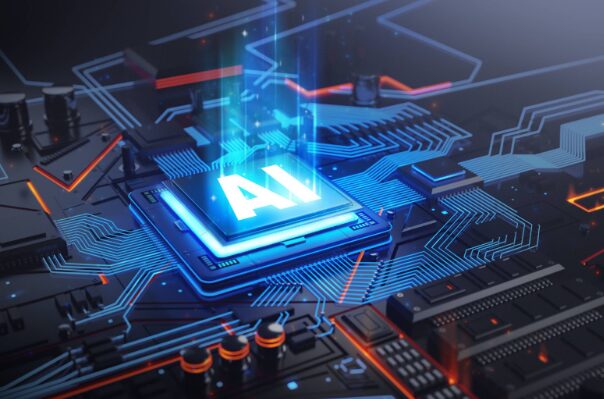






![Solana, Bittensor, Arbitrum, & BlockDAG 2025’s Top Crypto Coins to Invest In [ Expert Analysis]](https://techbullion.com/wp-content/uploads/2025/05/Solana-Bittensor-Arbitrum-BlockDAG-2025s-Top-Crypto-Coins-to-Invest-In-Expert-Analysis-300x180.png)
![Solana, Bittensor, Arbitrum, & BlockDAG 2025’s Top Crypto Coins to Invest In [ Expert Analysis]](https://techbullion.com/wp-content/uploads/2025/05/Solana-Bittensor-Arbitrum-BlockDAG-2025s-Top-Crypto-Coins-to-Invest-In-Expert-Analysis-80x80.png)


